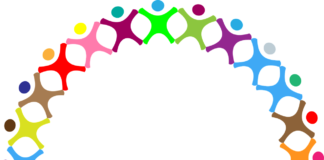Superflex is a dynamic and innovative social thinking curriculum that has gained widespread recognition for its effectiveness in fostering social and emotional learning in children and individuals with developmental challenges. Developed by Michelle Garcia Winner, a speech-language pathologist, Superflex provides a comprehensive framework for teaching individuals to understand and navigate the complex world of social interactions. Rooted in the principles of social cognitive theory, this curriculum offers a holistic approach to enhancing social skills, emotional regulation, and self-awareness.
At its core, Superflex is designed to address the needs of individuals who struggle with social communication, executive functioning, and emotional regulation. This includes children with autism spectrum disorders, attention deficit hyperactivity disorder (ADHD), sensory processing disorders, and other related conditions. The curriculum’s unique and engaging approach centers around the concept of the “Superflex Universe,” where characters and scenarios are used to represent various social challenges and situations. Central to this universe is the titular character, Superflex, who embodies flexible thinking and adaptive social behaviors.
Superflex’s approach is characterized by its focus on promoting “flexible thinking.” The curriculum introduces the concept of “Unthinkables” – characters that represent common cognitive and behavioral challenges individuals may encounter in social situations. By personifying these challenges, Superflex helps individuals externalize their struggles, making them easier to identify and address. The use of relatable characters and narratives helps individuals understand and discuss their own social difficulties without feeling overwhelmed or stigmatized.
Throughout the curriculum, Superflex and his allies – the “Team of Unthinkables” – work together to tackle various social scenarios and challenges. Each character on the Team of Unthinkables represents a specific area of social difficulty, such as impulsivity, rigidity, or sensory sensitivities. This creative approach allows individuals to develop a vocabulary for discussing their social struggles, making it easier to communicate their needs and collaborate on finding solutions.
Superflex’s effectiveness lies in its ability to engage learners through storytelling, role-playing, and interactive activities. The curriculum employs a variety of resources, including books, visual aids, worksheets, and games, to create a comprehensive learning experience. By using these tools, educators and therapists can tailor the curriculum to individual needs and learning styles, ensuring that each learner can effectively grasp and apply the concepts presented.
One of the key strengths of Superflex is its adaptability across different age groups and developmental levels. The curriculum includes various materials specifically designed for different age ranges, from young children to adolescents. This adaptability allows educators and therapists to provide targeted support to individuals at various stages of development, ensuring that the curriculum remains relevant and impactful throughout the learning journey.
Superflex also places a strong emphasis on generalization – the ability to apply learned skills in real-life situations. To facilitate this, the curriculum encourages consistent practice in a variety of settings. By practicing social thinking and flexible behaviors in different contexts, individuals can better internalize and apply the concepts they have learned. This approach helps bridge the gap between theoretical understanding and practical application, enabling individuals to effectively navigate social interactions in their daily lives.
In addition to its impact on individuals with developmental challenges, Superflex has proven to be beneficial in inclusive classroom settings. By introducing the concepts of flexible thinking, emotional regulation, and social awareness to all students, educators can create a more empathetic and supportive learning environment. This inclusive approach promotes understanding and acceptance among students of varying abilities, fostering a sense of community and cooperation.
In conclusion, Superflex stands as a transformative social thinking curriculum that has revolutionized the way individuals with developmental challenges approach social interactions and emotional regulation. Through its engaging characters, relatable narratives, and interactive activities, Superflex empowers learners to understand and address their social difficulties in a constructive and supportive manner. By promoting flexible thinking and offering practical strategies for navigating social complexities, Superflex equips individuals with the tools they need to thrive in a social world. Its adaptable nature and emphasis on generalization make it a valuable resource for individuals of all ages and abilities, fostering not only personal growth but also creating a more inclusive and compassionate society.
Engaging Characters and Narrative:
Central to Superflex’s approach is the use of relatable characters and captivating narratives. The curriculum introduces the concept of the “Superflex Universe,” populated by characters like Superflex and the Team of Unthinkables. This engaging framework helps individuals externalize and understand their social challenges in a non-intimidating way.
Flexible Thinking and Unthinkables:
Superflex promotes the development of flexible thinking by identifying and addressing “Unthinkables” – characters that represent specific social and cognitive challenges. By personifying these challenges, the curriculum helps individuals recognize, label, and manage their difficulties, making it easier to work on more adaptive behaviors.
Interactive Activities and Resources:
The curriculum offers a wide range of interactive resources, including books, visual aids, worksheets, and games. These tools are designed to cater to different learning styles and developmental levels, ensuring that individuals can engage with the material effectively and apply the concepts to their own lives.
Adaptability Across Ages and Abilities:
Superflex is designed to be adaptable to various age groups and developmental levels. With materials tailored for young children, adolescents, and even adults, educators and therapists can customize the curriculum to meet the specific needs of each individual, ensuring relevance and effectiveness.
Promotion of Generalization:
Superflex places a strong emphasis on the practical application of learned skills. By encouraging practice in different contexts and settings, the curriculum helps individuals generalize the concepts they’ve learned to real-life situations. This practical approach bridges the gap between theory and real-world social interactions, empowering individuals to use their new skills effectively.
Superflex, born out of the visionary work of Michelle Garcia Winner, has emerged as a beacon of hope and a guiding light for individuals navigating the intricate realm of social interactions and emotional understanding. With its roots deeply embedded in the realm of social cognitive theory, Superflex represents more than just a curriculum; it symbolizes a paradigm shift in how we perceive and address the challenges faced by those with developmental differences.
In the landscape of education and therapeutic interventions, Superflex stands as a testament to the power of creativity in fostering growth. It recognizes that the human mind is wired to grasp concepts more readily when presented in a context that resonates with its natural inclinations. The “Superflex Universe” is a masterstroke in this regard, creating a dynamic backdrop where characters come to life, enabling individuals to relate their own experiences to the adventures and dilemmas faced by these fictional personas.
Superflex, as an educational tool, extends its reach beyond the classroom walls. It doesn’t just provide a structured curriculum; it offers a shared language that bridges the gap between individuals with developmental challenges and those without. This common vocabulary becomes a means of connection, understanding, and empathy. The lexicon of “Unthinkables” and “Thinkables” becomes a vehicle through which individuals can externalize their struggles, giving them a tangible form that is easier to dissect, discuss, and address.
Michelle Garcia Winner’s creation isn’t limited to rote learning or rigid instruction. It is an invitation to the realm of imagination, where the protagonists of the “Superflex Universe” embark on journeys that parallel real-life situations. Through these narratives, learners explore a spectrum of emotions, dilemmas, and choices. As they witness Superflex and his allies grapple with challenges, they are subtly guided toward recognizing the nuances of social dynamics and the multifaceted nature of human behavior.
What sets Superflex apart is its holistic approach to social and emotional development. It doesn’t isolate social skills as a compartmentalized set of abilities; rather, it embeds them within the broader framework of emotional regulation, sensory awareness, and executive functioning. In doing so, it acknowledges the intricate interplay of these aspects in shaping an individual’s responses and interactions. This holistic approach mirrors the complexity of real-life situations and equips learners with a comprehensive toolkit to navigate a diverse range of scenarios.
Superflex thrives on the power of identification. By presenting social challenges as external characters, it permits learners to detach themselves from their struggles momentarily. This shift in perspective is instrumental; it transforms a personal difficulty into a tangible challenge that can be analyzed, discussed, and ultimately overcome. The notion of an “Unthinkable” not only empowers individuals to recognize their vulnerabilities but also fosters a sense of agency as they team up with Superflex to take on these adversaries.
A fundamental aspect of Superflex’s philosophy lies in its celebration of neurodiversity. It reframes social differences as variations rather than deficits, acknowledging that each individual brings a unique perspective to the table. Through this lens, Superflex champions the idea that the diversity of cognitive processes enriches our collective social fabric. By embracing this perspective, individuals are encouraged to explore their strengths and navigate their challenges with a renewed sense of self-worth.
The success of Superflex goes beyond empirical data or clinical studies. It can be witnessed in the anecdotes of a child who, for the first time, articulates their feelings using the language of “Unthinkables.” It resonates in the interactions between students, where understanding and acceptance replace confusion and exclusion. It radiates through the eyes of parents who witness their children’s growth as they internalize the principles of flexible thinking and self-regulation.
In the broader context of education, Superflex exemplifies the evolving role of educators and therapists. It underscores the importance of transcending traditional roles as mere instructors and embracing a multifaceted identity as guides, mentors, and advocates. The curriculum’s narrative approach calls for a level of engagement that surpasses the boundaries of conventional teaching. Educators become storytellers, weaving narratives that captivate, educate, and inspire.
Superflex is a reminder that learning is a dynamic, ongoing journey. It acknowledges that social learning is not confined to a classroom or a specific timeframe; it is a lifelong endeavor. As individuals progress through different stages of life, Superflex’s concepts evolve alongside them. The “Superflex Universe” remains a constant companion, offering insights and strategies for new challenges that emerge in adolescence, adulthood, and beyond.
In essence, Superflex is a symphony of creativity, psychology, and compassion. It harmonizes imaginative storytelling with evidence-based principles, resulting in a transformative educational experience. It champions the idea that the challenges individuals face are not insurmountable barriers, but opportunities for growth and self-discovery. Through Superflex, Michelle Garcia Winner has given individuals the gift of a shared narrative, one that empowers them to navigate the labyrinth of social interactions with courage, empathy, and unwavering superflexibility.














